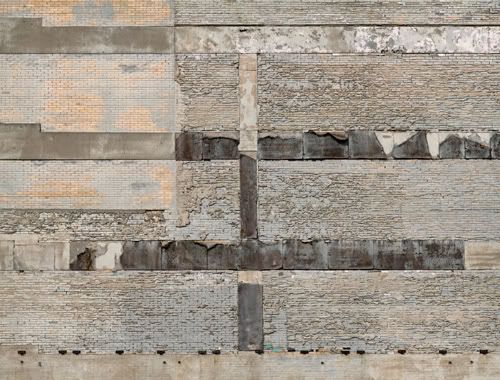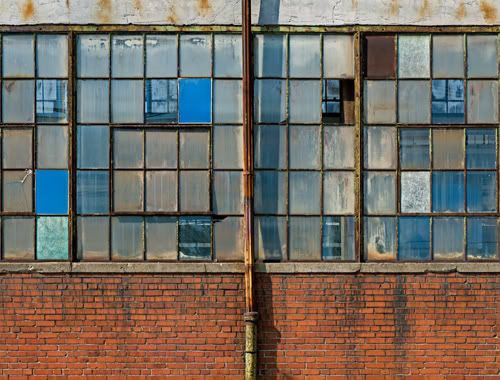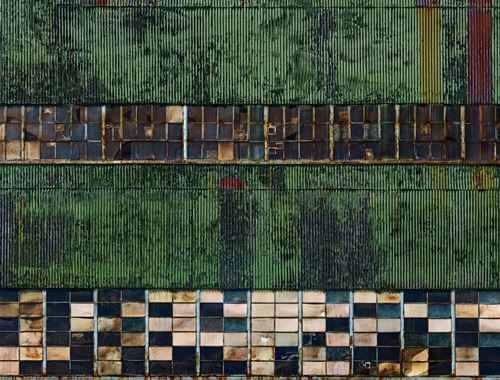
John Chakeres, Grey Wall, Columbus, archival pigment ink print, edition of 10, 2011, 31.5 x 41.5 inches
The first thing you notice when you see these large photographic prints by John Chakeres at John Cleary Gallery is that the subject matter is flat. It's a flat image of a flat subject. This is not to say that the subjects have no texture. Grey Wall, Columbus, for example, has peeling tar paper and rough concrete textures. But Chakeres is making photos of walls--things with no volume.
This puts one in mind of the modernist ideal as promoted by Clement Greenberg and Michael Fried. These writers developed a highly essentialist theory of painting, noting that one common feature of painting was that it was on a flat surface, and that therefore the subject should be flat. Any sort of suggestion of volume was forbidden. This was one reason Greenberg liked Jackson Pollock so much. His all-over compositions didn't create any sort of illusion of space--every square inch of the canvas seemed to be equally on the surface.

John Chakeres, Painted Windows, Columbus, archival pigment ink print, edition of 10, 31.5 x 41.5 inches, 2008
While Greenberg and Fried seem like puritan spoilsports in hindsight, Pollock still has the power to influence artists today. Chakeres wanted to create photos that operated in some ways like a Pollock. Chakeres noticed that a Pollock operated equally well from across the room as from an inch away. He wanted to create large color photos that worked that way--as overall compositions and as detail. These tiny JPEGS can't even hint at the degree of detail visible in these photos. Each brick and window pane in Painted Windows, Columbus is its own highly detailed, textured image of a brick or window.

John Chakeres, Factory Wall, Columbus, archival pigment ink print, edition of 10, 31.5 x 41.5 inches, 2010
To achieve this, Chakeres took dozens of photos of each wall and used software to stitch the images together into a single whole. The result is a photo that few film cameras (maybe those room-size Polaroid cameras) could take. The result were files larger than one gigabyte (although after the layers were flattened, the final image files were slightly under a gig). In a way, it took until now for photos to be able to technically match what Pollock was doing the 40s and 50s.

John Chakeres, Screen Wall, Columbus, archival pigment ink print, edition of 10, 31.5 x 41.5 inches, 2010
But let's face it. Chakeres is no Pollock. Screen Wall, Columbus looks more like an Agnes Martin. And Pollock wasn't just creating flatness--he was expressing himself. Each twisting tangle of paint is Pollock's handwriting. The paintings have vigor, sometimes languid, sometimes nervous, but always in motion. There is no motion in Chakeres's photos. His approach is deadpan. And that's the irony. These matter-of-fact walls--walls that one would consider ugly in person, if one even noticed them at all--are made beautiful by Chakeres's careful editing. They are beautiful, deadpan images, and when you think about it, making those two ideas work together is an admirable feat.




No comments:
Post a Comment